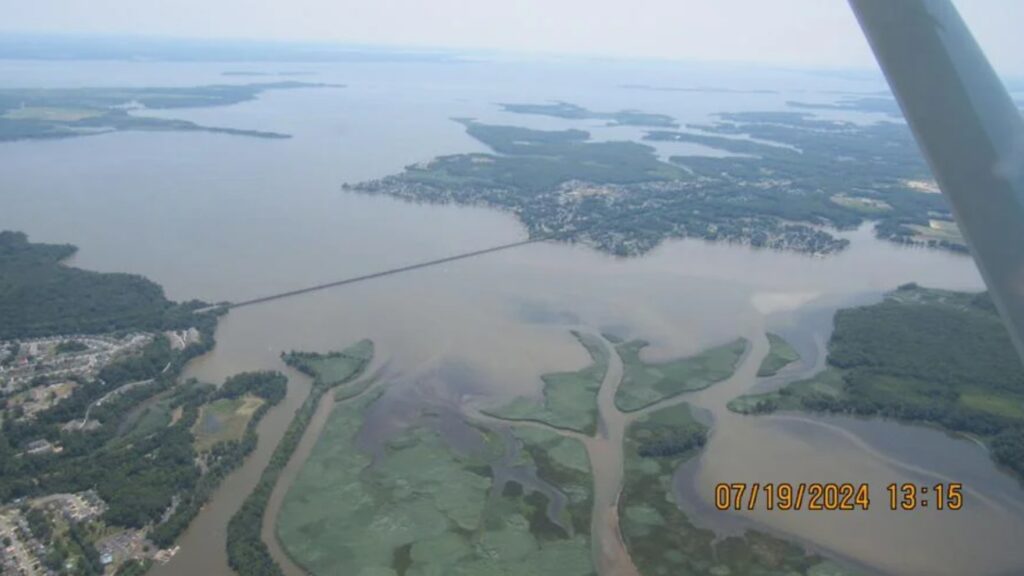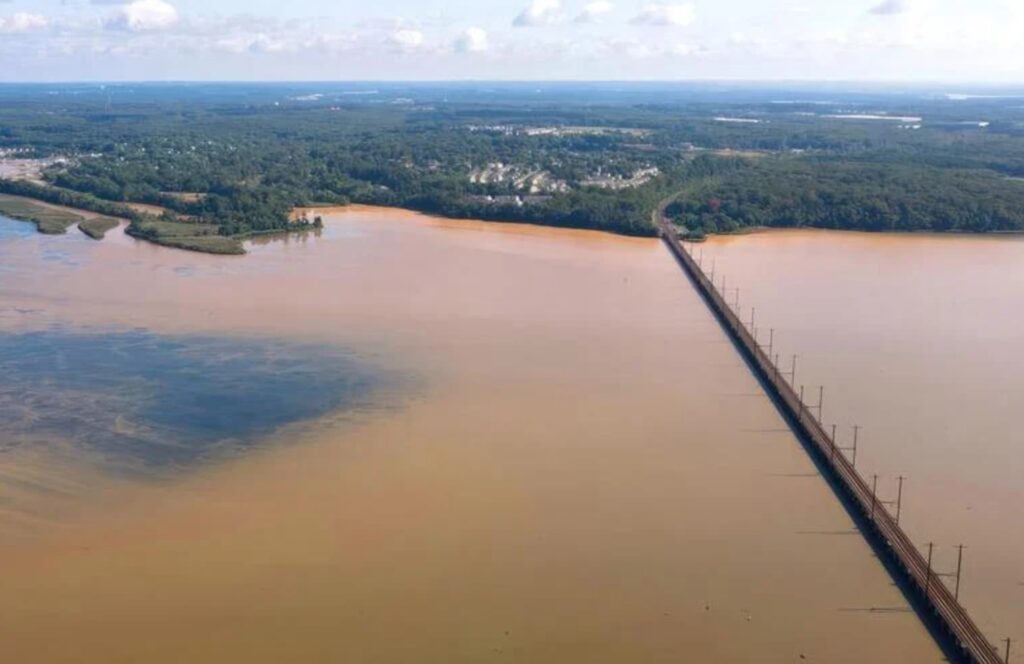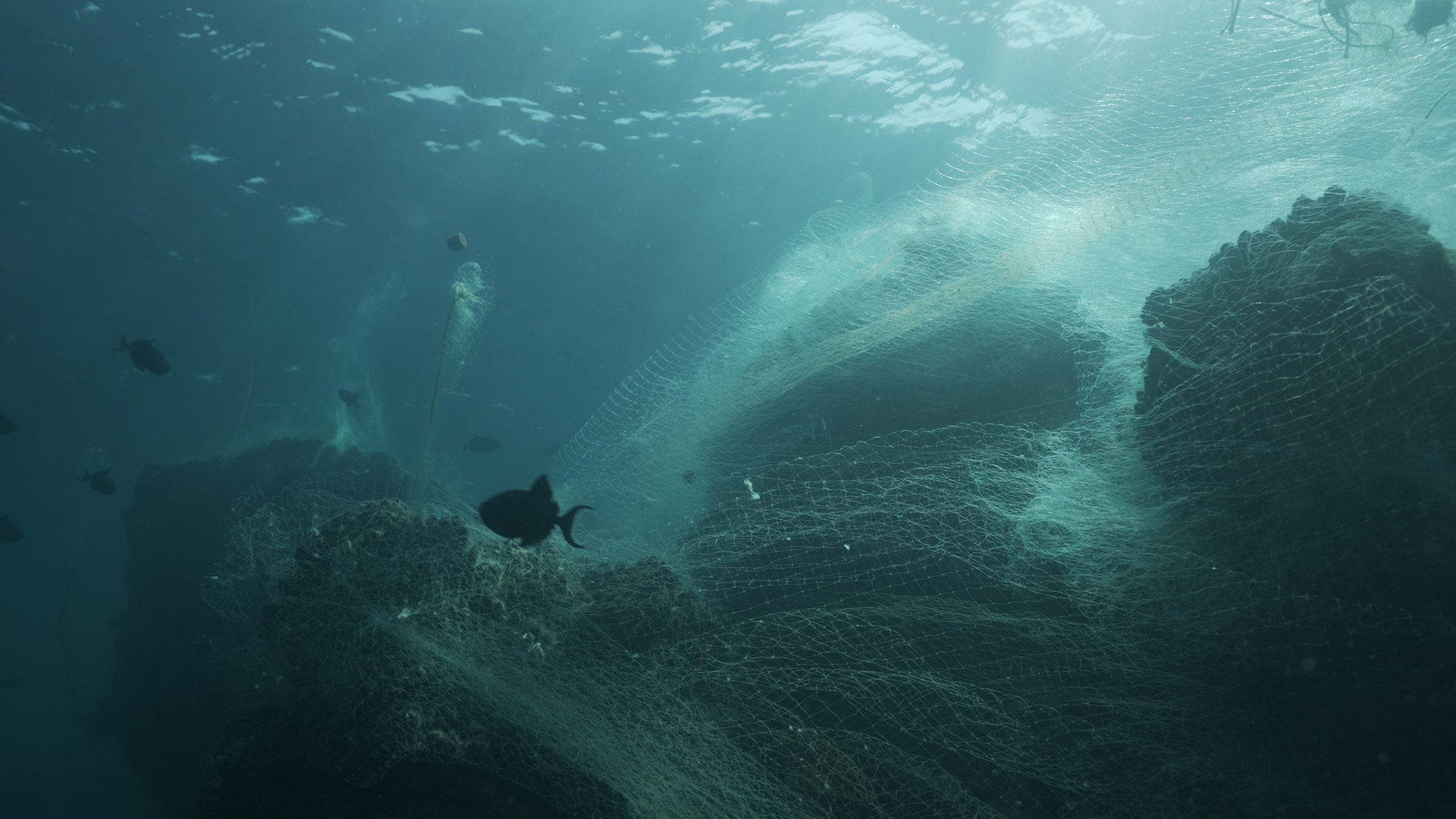For more than two years now, the Gunpowder River has turned orange or brown whenever there’s a hard or steady rain. It happened again in mid-July, after back-to-back downpours dumped 1.5 inches on the area over two days.
Aerial photos taken afterward show murky water flowing into the river from Foster Branch, a stream that drains a large housing development under construction in Harford County, Maryland.
Anger has grown on both sides of the Gunpowder, a tidal tributary of the Chesapeake Bay that separates Harford and Baltimore counties. Residents say they’ve filed repeated complaints about their beloved waterways being fouled by muddy runoff, yet Foster Branch and the Gunpowder still aren’t flowing clear.
“I haven’t seen the bottom of Foster Branch in—well, three years,” said Gunpowder Riverkeeper Theaux Le Gardeur.
With sunlight unable to reach the bottom, underwater grasses that provide critical habitat for fish and crabs have effectively vanished from the Gunpowder. Even as grass beds expanded 7% Baywide in 2023, according to the latest annual survey, they declined by 80-87% in the Gunpowder.
On Aug. 7, Le Gardeur formally notified the three companies building a 200-acre housing development in Joppa, called Ridgely’s Reserve, that he intends to sue them for failing to keep the soil from washing off their project, in violation of federal and state water pollution laws.
The riverkeeper and residents contend that the developers have been cited for dozens of sediment and erosion control violations and other infractions since 2022, when they cleared 120 acres of mostly wooded land along Foster Branch.
The Maryland Department of the Environment (MDE) has inspected the construction site 33 times since May 2022, according to agency data posted online. State inspectors found sediment and erosion control violations on every visit, including the most recent one July 23.
Patrick DeArmey, an attorney with Chesapeake Legal Alliance, which is representing the Gunpowder Riverkeeper, called this “one of the most egregious examples of uncontrolled construction stormwater runoff in Maryland. The flows of turbid runoff are so large you can see it from space.”
State law authorizes MDE to levy fines of $1,000 per violation up to a maximum of $20,000, or in severe cases to file a lawsuit seeking a $10,000 penalty. Even though every MDE inspection report mentioned the agency could impose penalties for violations, the state agency deferred to Harford County in each instance to follow up.

Harford County officials, meanwhile, maintain they have acted forcefully in response to the complaints. The county levied two $10,000 fines on the developer, an unusual step for a jurisdiction that until recently has rarely imposed monetary penalties for such violations.
The county also stopped work on the development seven times over the last two years, ordering construction halted for anywhere from two days to more than a month until failed runoff control measures had been deemed fixed.
In February, after county officials threatened to revoke the development’s permits, Forestar Real Estate Group, a subsidiary of the Texas-based national home builder D.R. Horton, formally agreed to beef up runoff control efforts at the site. The company pledged to hire a dedicated contractor to install more and better silt fences, detention ponds and other measures and to make daily inspections of them. It also said it would hire a contractor to treat muddy detention ponds with flocculants, chemicals designed to clear up the water by getting the sediment to settle to the bottom more quickly.
Representatives and a spokesperson for Forestar did not immediately respond to a request for comment.
Matt Button, a county spokesman, wrote in an email that Harford officials “continue to proactively inspect the project weekly and after major storms and will continue to hold the developer to the terms of the agreement, the permit and the sediment control plans.”
Residents say despite the county and state responses to their complaint, they haven’t seen much if any improvement.
“There’s just a calamity of band-aids and excuses of why this can’t be changed,” complained Jack Whisted, a retired engineer who lives along Foster Branch in Joppatowne.
Agitation over the muddy runoff has spread across the Gunpowder to Baltimore County. A frustrated resident of Oliver Beach on the river’s southern shore put together a website headlined “Mad About Mud” that channels public ire over the situation.
“Looking out of our windows at Oliver Beach, you just saw this orange going down the middle of the river,” said Lindsay Crone, the site’s creator. “And everyone was so shocked.”
A petition on the website has collected more than 800 signatures so far demanding “immediate action to hold accountable those responsible and protect the Gunpowder River for future generations.”
MDE officials have told residents they are preparing to take enforcement action for past violations and referred the situation last fall to the state attorney general’s office for potential legal action.
In the meantime, Matthew Rowe, MDE’s deputy water and science administrator said in response to an email query that agency officials are “continuing to evaluate the site’s current status to ensure continued compliance.”
“There’s just a seeming reluctance on the county’s and state’s [part] to do anything meaningful as it relates to penalties,” said Le Gardeur, the Gunpowder Riverkeeper. “The stop work orders and corrective orders issued have not fixed the problem.
“I can’t think of a stick big enough at this point,” he added, “that would correct the harm that has happened to communities downstream and to the waterway.”
Brandon Jenkins, a crabber, said the water he drew from the river for his soft-crab operation was so cloudy he couldn’t see the crabs on the bottom of the tank.
“I won’t swim in this water because it’s so dirty,” he added.
The Harford County Council voted earlier this year to impose a 20-acre limit on how much soil a developer can leave bare during construction, reversing a decision made after MDE in 2017 relaxed its limit on how much ground could be cleared at one time.
Residents say that should help reduce mud pollution in future but does nothing to stop runoff from projects like Ridgely’s Reserve that got greenlighted before limits were imposed.
This story first appeared at bayjournal.com on Aug, 8, 2024.



